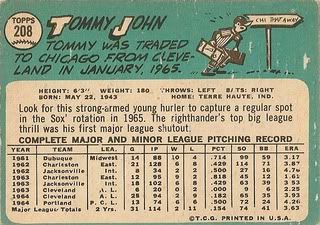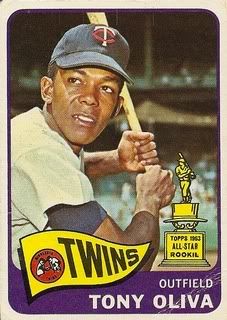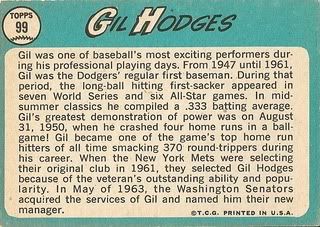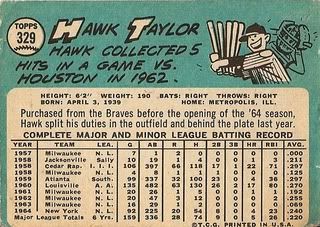
Ah, it's been a while since we've had a truly well-worn card to enjoy. The condition of this card also complements the weary, befuddled expression on Bob Kennedy's face. It's as if he's saying, "What's this 'head coach' malarkey?"
Fun facts about Bob Kennedy:
-Bob signed with his hometown Chicago White Sox in 1937, when he was only 16! Previously he had worked as a vendor at Comiskey Park.
-After a 3-game taste of the majors in 1939, the 19-year-old third baseman played 154 games with the Pale Hose in 1940, making him the first teenager in 40 years to top 150 games in a season. He hit .252 with 74 runs scored and 52 driven in, but slugged only .315.
-During World War II, he served first in Naval Aviation, and later in the Marines.
-In June 1948, Kennedy was traded to the Indians, and hit .301 in limited duty for the duration of the season. There are no specific pinch-hit stats available for that season, but we do know that he hit .395 (17-for-43) as a sub. He appeared in three World Series games, collecting an RBI single in one of his two at-bats as Cleveland won their last championship to date.
-In an expanded role in 1949 and 1950, he hit a cumulative .284 with 50 doubles, 10 triples, 18 home runs, and 111 RBI in 267 games with the Indians.
-He spent most of the 1954 season with the Orioles, who had just moved east from St. Louis. On July 30, his grand slam off of Yankee hurler Allie Reynolds was the first bases-loaded homer for any Oriole.
-Bob also played for the Tigers and Dodgers, and retired in 1957 with a .254 career average, 63 home runs, and 514 RBI in parts of 16 seasons.
-About that "Head Coach" thing: after the Cubs lost 94 games in 1960, owner Phillip K. Wrigley decided to institute a "College of Coaches" in place of a traditional manager. Basically, a small group of coaches from within the organization would rotate in the manager's position with the major league club, ensuring that there was a uniformity of instruction from the minors to the majors. I'm sure you predict a few problems. Players complained that each manager shuffled player roles as he saw fit, and the results were certainly poor: the Cubbies lost 90 games under four coaches in 1961, and plummeted to 103 losses the following year with three men sharing the helm. Kennedy was hired as the man at the top in 1963, but was still saddled with the title of "Head Coach". He oversaw a big improvement to 82-80 that year, though it was still only good for seventh place in the National League. Chicago slipped to 76-86 in 1964, and the Head Coach was cashiered early the next season with a 24-32 record. Leo Durocher was hired prior to the 1966 season, and unequivocably stated in his introductory press conference that his title would be "Manager". So that's that.
-Bob was hired as the Athletics' manager for their first year in Oakland in 1968, and again steered a significant turnaround, from 62-99 to 82-80. Seeking a contract extension at the end of his first season in charge of the A's, he was instead fired by fickle owner Charles O. Finley. He never managed again, but held front office jobs with the Cardinals (Director of Player Development and then Assistant GM), Cubs (GM), Astros (Assistant GM), and Giants (Assistant GM). He passed away in 2005 at the age of 84.
-A pair of his sons played pro ball. Bob Jr. was a seventh-round pick of the Cardinals in 1971, and never reached beyond Class A in five seasons. He later spent a decade scouting for the Mariners, Cubs, and Astros. Terry was also a Cards' draft pick, taken sixth overall in the first round in 1977. He was a catcher for 14 years in the majors with St. Louis, San Diego, Baltimore, and San Francisco. He was a four-time All-Star with a .264 average and 113 career home runs. He has managed in the minors for 11 seasons, and is currently the skipper for San Diego's AAA Tucson club.


































